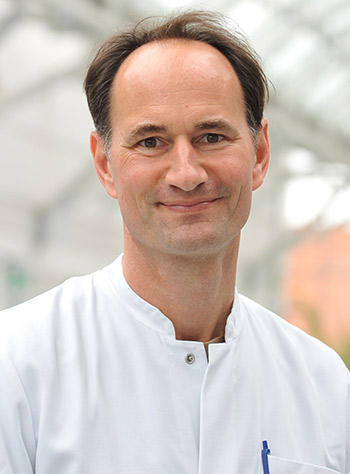The Second Berlin Patient
A seventh individual has likely been cured of HIV, providing new insight into eradicating the virus
At an AIDS 2024 press conference on Wednesday, July 24, researchers presented evidence that another individual has likely been cured of HIV.
The “second Berlin Patient,” an adult German male born in 1964, joins six other individuals who have been cured by a stem cell transplant to jointly treat their blood cancer and HIV. The first person to be cured, Timothy Ray Brown, was an American who lived in Berlin, where he underwent the high-risk procedure in 2008. At the time, researchers referred to Brown as the Berlin Patient since he wished to remain anonymous at the time.
The second Berlin Patient, who also wishes to remain anonymous, offered a statement that is sure to resonate: “A healthy person has many wishes, a sick person only one.”

Prof. Christian Gaebler of Charité–Universitätsmedizin Berlin presented study results for the second Berlin Patient at AIDS 2024. (Photo © Charité)
Past HIV cure cases (Berlin, London, Düsseldorf, New York, and City of Hope) have been stem cell transplants in which the donor cells were virtually impervious to HIV—the cells had a double “homozygous” gene mutation for a protein, CCR5, needed for HIV to enter a cell.
But the second Berlin Patient provides new evidence that this gene mutation might not be the only path to a cure.
At the press conference, Prof. Christian Gaebler, of Charité–Universitätsmedizin Berlin and one of the study’s principal investigators, shared that the second Berlin patient has been in sustained HIV remission for five and a half years without antiretroviral therapy after a stem cell transplant of donor cells with only a single “heterozygous” gene mutation for CCR5. (Prof. Olaf Penack, senior physician at the clinic where the second Berlin Patient was treated, explained in a prepared release that the team had been unable to find a donor with two copies of the HIV-resistant mutation.) In this case, the donor cells were fully susceptible to HIV infection, but the research team could find no residue of HIV after years of monitoring.
Similarly, another individual who has been cured, the Geneva Patient, underwent a transplant that used “wild-type” donor cells, with neither of the two genes for CCR5 mutated and, thus, like the second Berlin Patient, should be susceptible to HIV infection.

So how was the second Berlin Patient and the Geneva Patient cured?
Prof. Gaebler suggested that the speed at which the new immune system replaced the old one or the potential presence of special properties of his immune system, such as intensely active natural killer cells, might be explored as explanations.
Another explanation has been previously offered by amfAR grantee Dr. Jonah Sacha of Oregon Health & Science University. His study, published in the journal Immunity in July 2023, showed that of four monkeys infected with SIV (the simian version of HIV), treated with ART for several months, then transplanted with “wild-type” monkey cells, one was cured, just like the Geneva and second Berlin Patients. The research team linked this cure to “allogeneic immunity,” i.e., a post-transplant graft-versus-host response in which the donor’s T cells and monocytes react against all foreign cells, killing them (including those harboring SIV).
“Currently, stem cell transplants are not a viable option for the 39.9 million people living with HIV because the high-risk procedure can only be performed as a last-ditch effort to treat blood cancer and HIV,” says Dr. Jeffrey Laurence, amfAR’s senior scientific consultant. “However, each cure case provides new clues as to how we might eventually develop a cure for everyone, everywhere.”
Share This:
